Kazakh national dishes made of wood
Look at the dishes - looking at the dishes, put mistress
This Kazakh proverb has a deep meaning and a great educational significance. In a beautiful dish even the simplest food looks appetizing. From ancient folk craftsmen made dishes from environmentally friendly natural material, using oak, birch and other strong wood.
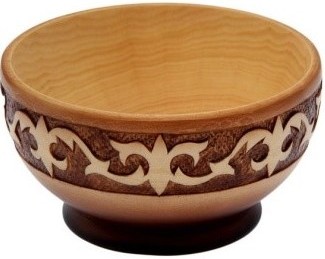
Tostagan
Its the beginning of the glass leads from the Turkic wooden utensils - tostagan (low round dinnerware type bowls). Over the years, the form and name have changed. An important physical characteristic of the glass is the material from which it is made, and the properties of this material. Most often glasses are made of glass. This practice is reflected in the fact that in some languages, such as English, German, French, the words "glass" and "glass" are homonyms: glass, glass, verre" Tostagan (tostakan; from KAZ. tostagan) - a small vessel without handles, hemispherical shape, used in the culture of the peoples of Kazakhstan and Central Asia for serving food or drinks. Known since the second half of the 1st Millennium BC. The shape resembles a low volume bowl or bowl. A distinctive feature-whole-hollowed from a piece of wood.
The form of tostagan is connected with the nomadic way of life of ancient nomads. The round shape without handles allowed to put such dishes especially compactly, one in another that was important in nomadic conditions.
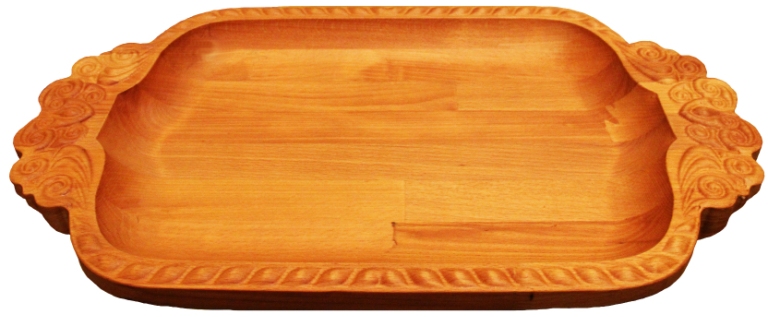
Astau
It is believed that "astau" - native Kazakh wooden dishes, dish for serving beshbarmak, pilaf, meat, sheep's head. The main advantages of ecological tobacco-in this dish beshbarmak does not cool down longer, and wood gives a festive look to the table. "Astau" is made exclusively of hard wood – birch and willow.
One master can take 3-4 days to produce "astau", another month, and the third will have a beautiful tobacco in one day.
"Astau" can be for beshbarmak (oblong with wide edges), for pilaf (more round and not so deep) and more flat - for feeding boiled sheep head.
Previously, the Kazakhs had a custom: the head of the family, in which the baby will be born soon, went to the master and ordered him "astau". By the time the baby was born, the dishes had to be in the parents ' house. And years later, when the grown-up son or daughter created families, parents together with the General dowry presented children with this ware. It was believed that it is charged with magical powers that can protect the house and the family heir from evil spirits and misfortunes.
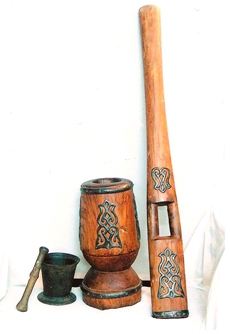
Kel-cеlsаp
Keli (stupa-dishes for peeling millet)hollow out of a single piece of solid wood, in the form of a truncated cone with a narrower top. After gouging, the inside is annealed for strength and roughness removal. On both sides of the cell leave recesses for ease of use. The height of the cell is 70-80 cm, the average diameter is about 30 cm.
For shelusheniya containers required nelsap (the pestle) which is also vystrugivajut from a single piece of wood with a length of about 1 m , diameter 15 cm Bottom part, make a rounded shape.
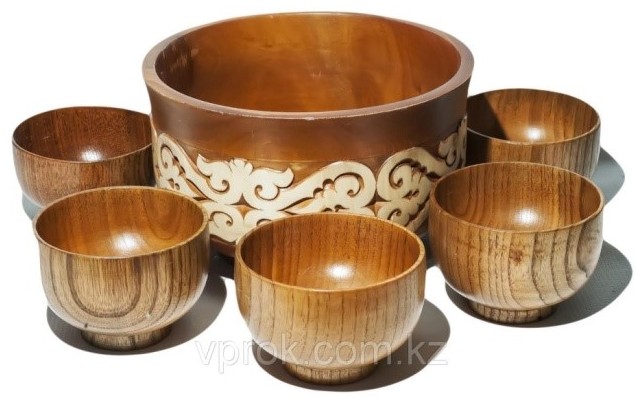
Zerene
Deep bowl for kumys and shubat with thick and straight sides and wide bottom. The size and appearance of the grains is similar to a ball. For durability of grains do of firm breeds of a tree and decorate an ornament. OAU (bailer), a, tostain (bowls) – glassware.
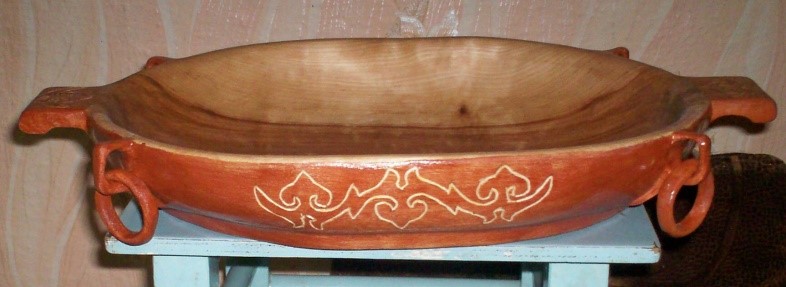
Tegene
Ample ware for koumiss, with straight thickened edges and round "ears" to grip. Hollowed out of hard wood, ears are sometimes made of iron or copper. Decorated with silver and bone patterns. Patterned wooden lid gives the dishes extra elegance.
Settlement tegene - heavy dish, so use it only on holidays and special occasions. The rest of the time it is lubricated and stored in a place where there is no direct sunlight.
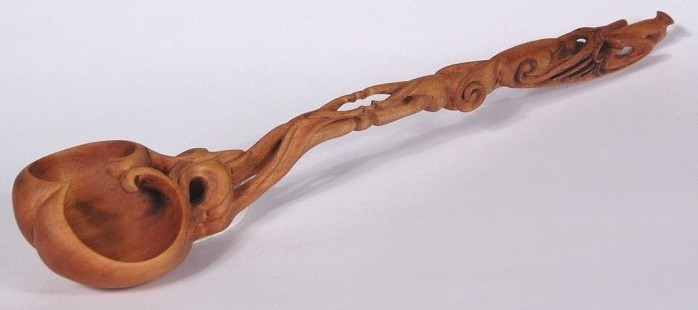
Saptaayak
Sap - pen, ayak - bowl, wooden bowl of oblong shape with handle, decorated with beautiful patterns. Convenient for transfusion of Mare's milk in another bowl.
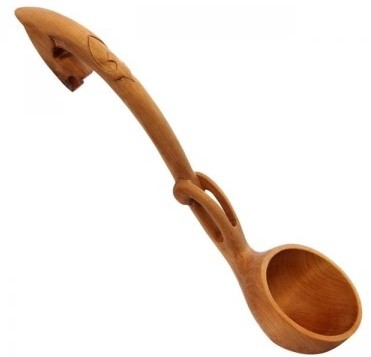
Ojau
A scoop with a long handle, made from a single piece of wood and decorated with patterns. On the handle for convenience, cut out the notch. Ogou, there are both single and double. Ojou – an essential addition to the globe.
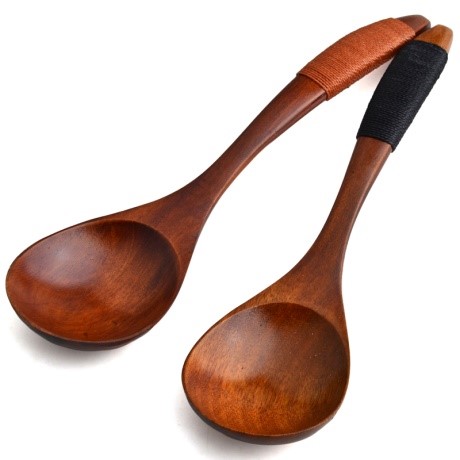
Qasyq
A spoon, less than ozhau, is also cut from a single piece of wood, so it is also called Agash kasyk (Agash – tree, kasyk – spoon), painted with bright colors. Make for both children and adults.
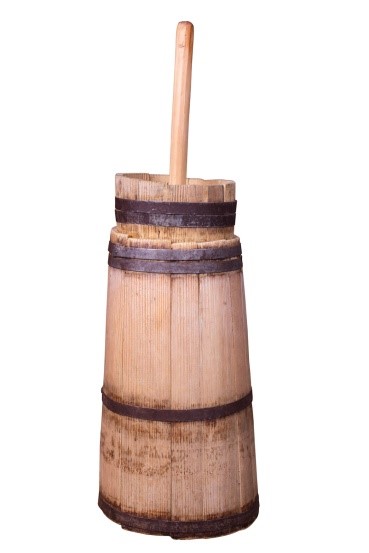
Kubi
Wooden vessel for whipping koumiss, airan, shubat is fermented with the skin. Kubi is made of a single piece of wood or oak, willow, juniper. For KB of slats is mounted the bottom, outside of Reiki tightening the rings. Kubi from a single piece of wood for smoothness is burned. Kubi has the shape of a truncated cone with a narrow top, covered with an elegant lid. In the middle of the cover or with edge drill a hole for the handle of the skimmer. Capacity CB – 20-30 liters, height -80 see Also wood hollow out krsek a vessel of a smaller size. "May kasyk" (may – oil).




